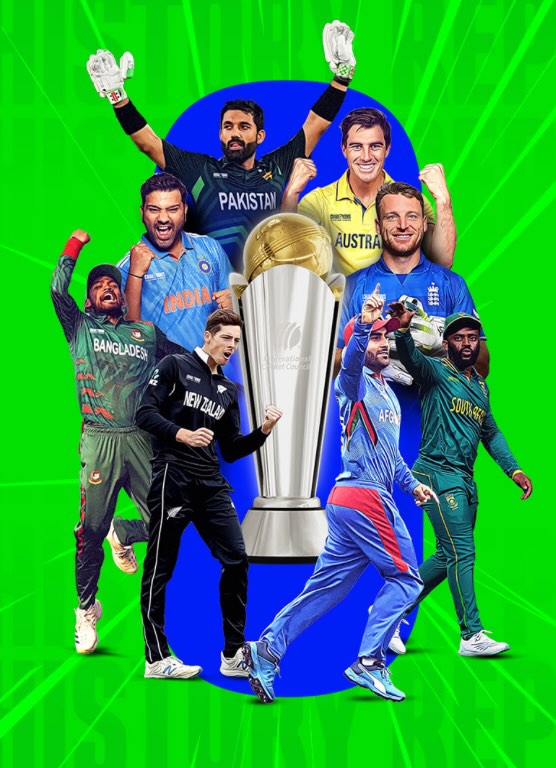

The NFL vs. Cricket: What Cricket Can Learn from the Ultimate Sports Model
Jamie Paul Lloyd
Originally published by Jamie Paul Lloyd on February 24, 2025 on Cricket Unlocked: https://shorturl.at/Eaobh
At its best, sport captures the imagination, fuels deep loyalty, and creates legacies that stand the test of time. The National Football League (NFL) has perfected this formula, structuring its competition in a way that makes every game matter, strengthens team identity, and ensures that winning remains the ultimate goal. Cricket, by contrast, has become saturated with tournaments, leading to a dilution of meaning, increased player movement, and a challenge for fans to remain emotionally invested.
Could cricket benefit from taking a step back and asking: Are we creating competitions that truly matter? Are we giving fans and players something to invest in long-term?
1. The Power of Scarcity: Less is More
The NFL’s 17-game regular season and single-elimination playoffs create urgency—every game counts, and each team has only one opportunity per week to prove itself. This format generates high stakes, anticipation, and ensures that winning is everything. The Super Bowl, played just once a year, is the sport’s pinnacle—undisputed in its significance.
Cricket, however, has an overwhelming volume of matches. International teams juggle Test series, ODIs, and T20Is, while domestic cricketers move between the IPL, BBL, PSL, The Hundred, and other leagues. There is always another game, another tournament, another opportunity. This constant cycle can diminish the weight of individual matches and dilute the significance of victory.
Would cricket benefit from a more structured calendar? Could reducing overlap between formats and leagues help make each tournament feel more prestigious?
2. Team Identity vs. a Mercenary Culture
One of the NFL’s great strengths is its ability to cultivate deep connections between players, teams, and fans. While player movement does happen, league structures such as the draft, salary caps, and long-term contracts ensure that teams maintain a sense of continuity. Rivalries build over time, players become icons of their franchises, and fans feel a deep attachment to their teams.
In cricket, particularly in franchise leagues, player loyalty is fleeting. A star cricketer may represent a team in India one season, then move to England, Australia, or the UAE within months. While this creates financial opportunities for players, it can leave teams feeling transient and undermine long-term rivalries.
Is there a way to encourage more continuity in team rosters? Could retention policies, long-term contracts, or structured player movement help deepen the connection between fans and teams?
3. The Meaning of Winning
In the NFL, winning the Super Bowl is everything. There is no secondary tournament, no alternative championship to pursue. If a team loses in the playoffs, the season is over, and they must wait an entire year for another chance. This singular focus on victory drives player commitment, team ambition, and fan passion.
Cricket, however, has multiple overlapping competitions. A player who fails to win the IPL may still have The Hundred or the PSL to compete in. A team that loses a T20 series can move on to an ODI series a week later. The abundance of opportunities can make individual trophies feel less definitive, both for players and fans.
Could cricket create a clearer hierarchy of competitions? Should some tournaments be given more prestige to ensure that winning them carries greater significance?
4. Fan Engagement and the Year-Round Narrative
The NFL has mastered the art of keeping fans engaged beyond the season itself. The draft, free agency, preseason, and training camps all serve as carefully structured touchpoints that maintain interest year-round. Even in the offseason, fans have something to debate, anticipate, and analyze.
Cricket’s non-stop schedule leaves little room for anticipation or storytelling. With multiple formats and tournaments overlapping, it can be difficult to establish a clear rhythm that builds excitement.
Could cricket leagues benefit from creating clearer offseasons and defining key moments in the year where fan engagement peaks? How can storytelling and continuity be improved to keep fans invested even when matches aren’t being played?
Where Does Cricket Go from Here?
The NFL’s success is built on structure, scarcity, and a clear sense of purpose. Every game matters, winning is everything, and fan engagement is carefully managed throughout the year. Cricket, by contrast, risks diluting its product through overabundance and short-term player movement, making it harder for fans to stay truly invested.
Perhaps the real question is: How does cricket strike the right balance? How can it maintain its global, year-round appeal while ensuring that every match, every competition, and every team still holds real meaning?
These are the types of questions worth exploring—for cricket boards, leagues, franchises, and even players themselves. By looking at what works in other sports, there’s an opportunity to shape cricket’s future in a way that benefits fans, players, and the game itself.
At Cricket Unlocked, we are motivated by these discussions and enjoy working with organizations that want to explore new approaches to competition structures, player pathways, and fan engagement. There are no simple answers, but by asking the right questions, cricket has the potential to create a more sustainable and compelling future.



